
Terry Gilliam’s three-decade-long struggle to bring Miguel Cervantes’ seventeenth-century novel Don Quixote to the big screen is an epic saga worthy of its knightly hero. Everything short of divine intervention seems to have scuppered the Monty Python alum’s numerous attempts, including lost financing, flash floods, legal disputes and personal injuries. The film took so long so produce that the two main roles, Don Quixote and Sancho Panza, were recast numerous times, with the likes of Robert Duvall, Michael Palin and John Hurt for the former and Johnny Depp, Ewan McGregor and Robin Williams for the latter. It was such a chaotic production that it’s intended ‘making of’ featurette, 2002’s Lost in La Mancha, turned into a documentary of its quixotic plight, predating the actual film’s completion by some fifteen years.
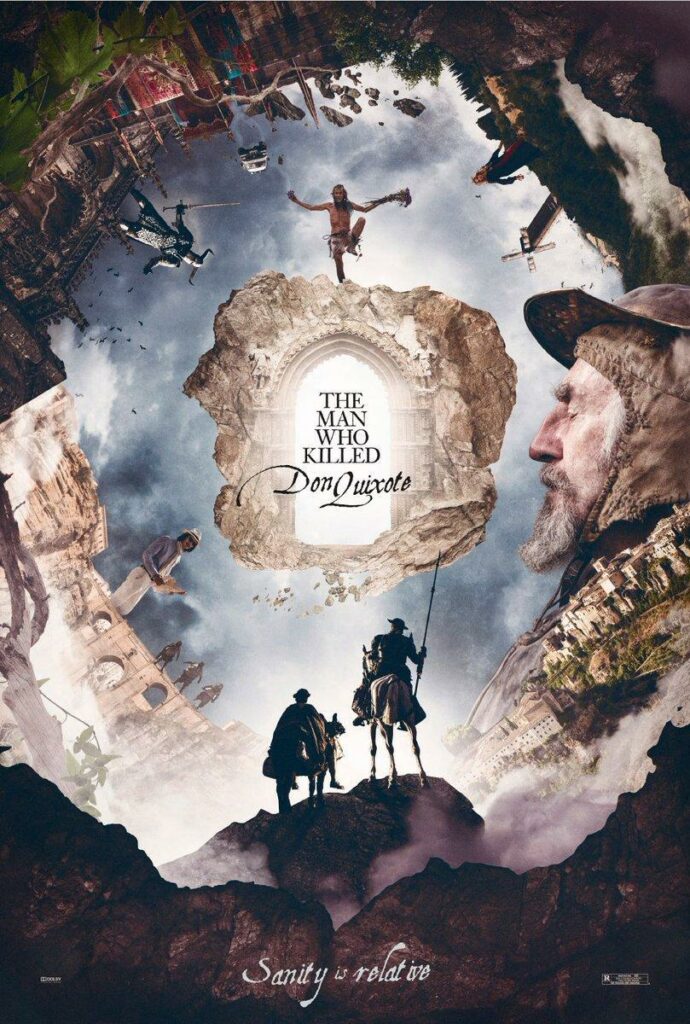
That the film finally got made is nothing short of a miracle. That it’s not particularly great is unsurprising, though it’s a triumph that it’s anything resembling coherent at all. Here’s the gist: while shooting a vodka commercial in Spain, Toby Grisoni (Adam Driver) comes across his first student film, an adaptation of Don Quixote he shot in a nearby village, Los Sueños (which aptly translates to ‘The Dreams’). Having long abandoned his scruples in pursuit of the big leagues, Toby ditches the shoot in an attempt to rekindle any artistic integrity he has left by revisiting the place where his love for movies began – only to learn of the collateral damage he unwittingly caused to the village where he shot his first feature. This is embodied in the fate of local cobbler Javier (Jonathan Pryce), whom Toby cast as the titular hero in his movie, and who now believes he is Don Quixote and that Toby is his loyal squire, Sancho Panza.

That synopsis alone may give you an idea of how convoluted the film is, but despite its over-complicated premise, its execution is often too simplistic. Most of its drawn-out run-time is spent on watching our odd couple traipse around the countryside with no real aim (or end) in sight – it’s even referenced when Toby breaks the fourth wall to exclaim, ‘There’s a plot??’ And while rural Spain looks utterly beautiful thanks to Nicola Pecorini’s sumptuous cinematography, the visuals mean little without some kind of plot to back them up. Perhaps it was meant to play like a nightmare, but it’s lacking even the dreamy coherence of a fairy tale. Many scenes feel superfluous, but none is quite so poorly handled as the grand ball, an exercise in exasperation which plays a lot of casual xenophobia and misogyny for laughs, and which features a truly abysmal scene where Quixote is fooled into ‘going to the moon’ to save fair maidens.
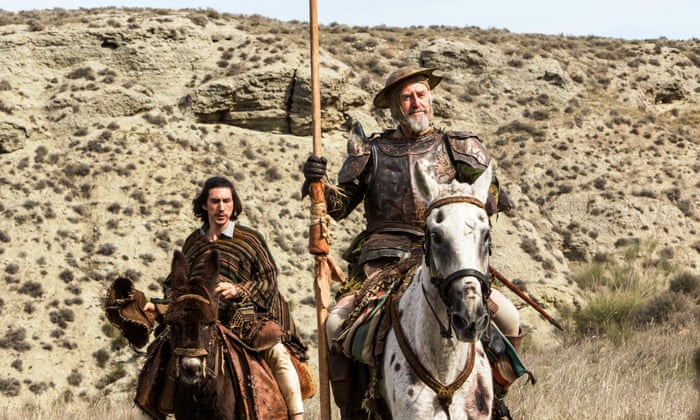
But at least the acting here more than makes up for the shaky narrative. As sardonic ad director Toby Grisoni, Adam Driver turns in yet another excellent performance. His character is supremely unlikable practically from start to finish, but his arc wraps up an interesting and not entirely predictable way. He’s a lightning bolt of smarmy charisma and manic energy, and any strength the film has traces back to the strange and spiky chemistry between Driver and his onscreen partner in crime: Jonathan Pryce, as the charmingly delusional Quixote. Pryce is absolutely wonderful here – he feels simultaneously ancient, chivalrous, masterful, adorable, mad, sane, wise, foolish, otherworldly and mischievous. Perhaps something magical happens when Pryce and Gilliam collaborate, given that some of their best work can be found in their last collaboration, 1985’s Brazil. There are shades of Midnight Run in the scenes where Driver’s sweary Millennial tries to cart around Pryce’s endearingly doddery oddity like an exasperated babysitter. Their interactions are funny, chaotic and sometimes moving, and they are easily the best part of the film. Even Óscar Jaenada and Jason Watkins excel in small roles.

It’s a shame they’re saddled with such scant material. Don Quixote may be Gilliam’s best work since 1995’s Twelve Monkeys, but it’s still a haphazard scrawl of a movie with way too many eccentric sojourns that makes it feel like ten different versions smushed together. Its despicable portrayal of women is easily its worst element, though, throwing Gilliam’s Madonna-Whore complex into stark relief. Jacqui, the character played by Olga Kurylenko (a supremely multi-faceted actress who excels across multiple genres from drama to action to romantic comedy) is portrayed as a nymphomaniacal harpy who throws herself at Toby any chance she gets. When Toby gropes a woman on his crew, it’s played as some kind of joke; in fact, it’s Toby’s inability to remember her name that is played for laughs – his casual groping of her is completely brushed over. And Angelica (Joana Ribeiro) caught Toby’s eye on the set of his original film when she was fifteen years old. They never progressed past innocent flirting at the time – thank god – but it’s uncomfortably specific, especially as Toby and Angelica do become romantically involved during film.
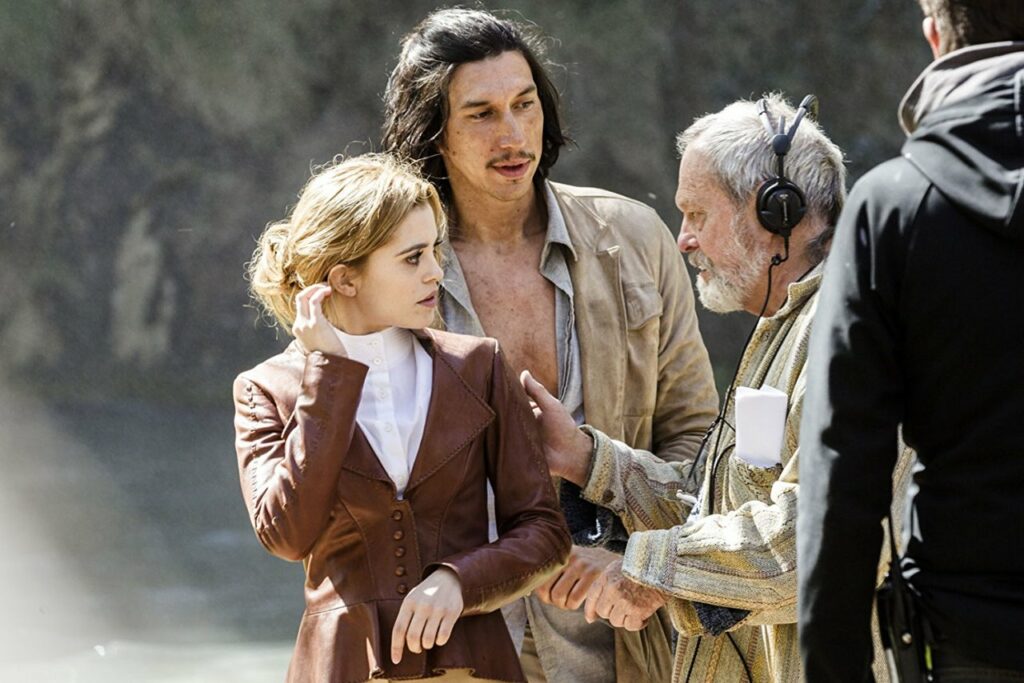
It’s a difficult film to review because, in a way, it feels as if it involves appraising Gilliam’s soul. Gilliam has long been likened to Quixote, both dreamers who defiantly live a fantastical existence in the face of orthodox society. Watching his finally finished treatise to the elusive knight errant feels like a trip into the windmills of his mind. He even gets to wreak cinematic revenge on the producers who dashed his hopes for decades by framing Stellan Skarsgård’s producer character as the embodiment of all evil in a way that resonates with M. Night Shyamalan’s decision to write the gruesome death of a callous film critic in Lady in the Water. It’s a fittingly metatextual adaptation given that the novel played with those kinds of elements, branded as a relic from the ‘archives of La Mancha’ in order to enhance its credibility. And though the line between fantasy and reality remains, as in much of Gilliam’s filmography, blurred, its period features seem to comprise a fantastical gloss over the modern world – modern-looking security guards with shades and earpieces line the castle walls, and Kurylenko, resplendent in gaudy medieval finery on a horse, taps away at her smartphone.
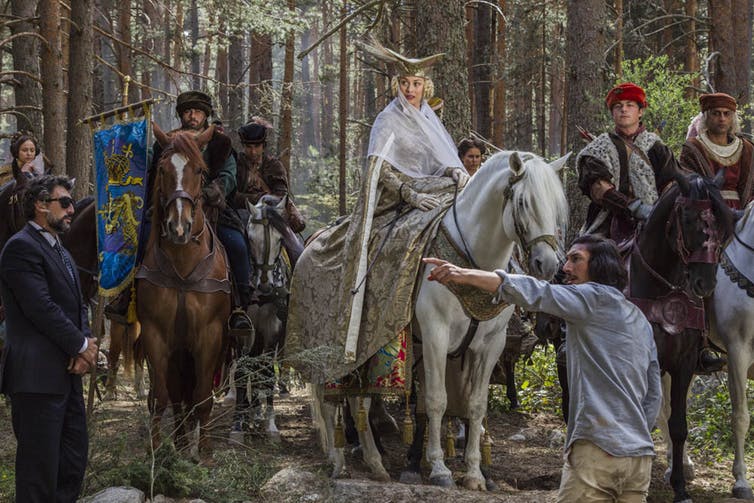
The narrative may be rickety, but the film’s presiding theme decidedly isn’t. Gilliam expresses it through one of the film’s tertiary characters – Rupert, Toby’s agent (Jason Watkins) – who tells his client that ‘we become what we hold on to’. It’s sneaked in so early in the film, and spoken by such a minor character, that it almost slips under the radar, but it’s essentially the mission statement of the movie, which goes on to literalise it in many ways, not least through Pryce’s Quixote, and of course through Gilliam himself. A significant portion of his personal and professional life has been tied up in this movie’s making (and ‘unmaking’, as he memorably states in the title credits); to even conceive of its completion was viewed by many as Gilliam tilting at windmills, so of course he feels justified in a little self-indulgence. But Gilliam does seem acutely self-aware of his own impractical endeavour, as the film directly tackles the notion that collateral damage always accompanies obsession, and that a singular artistic vision may take its toll on many.
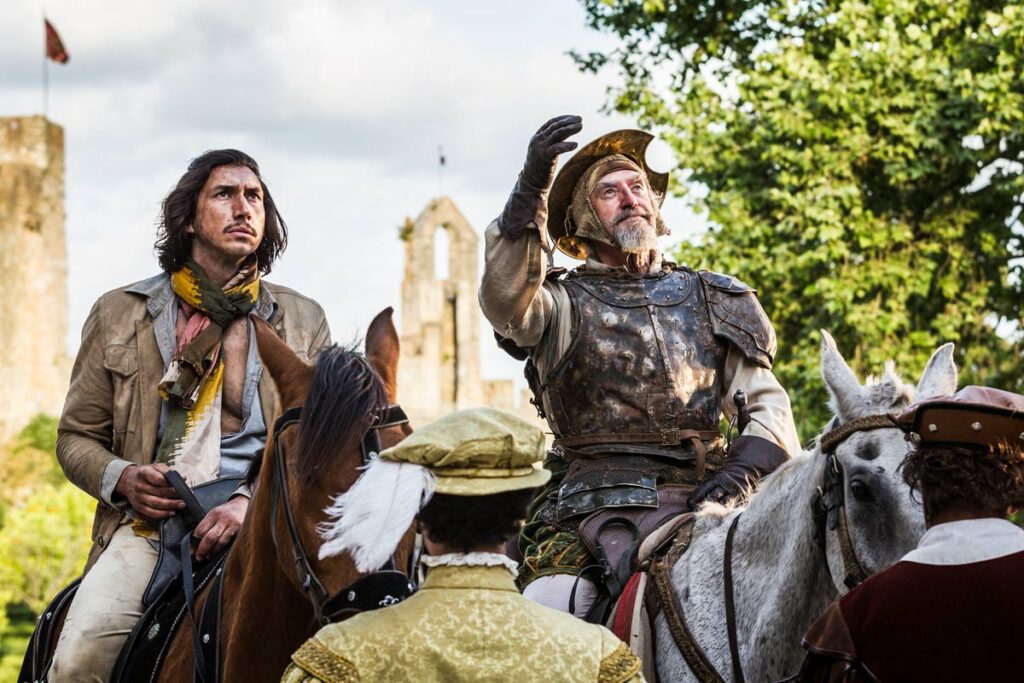
I think Mark Olsen of the L.A. Times said it best: ‘For anyone struggling with whether to give up, concerned that the result will not match the effort, Gilliam seems to be planting a flag — or more accurately charging a windmill — to say the effort is the reward.’ Having seen the film while I was in the final weeks of my PhD corrections, I felt rather warmly towards it – like Gilliam, I too just wanted to get the thing done at last. There are moments of brilliance here, when Gilliam considers the social cost of filmmaking, the melancholy of growing old, of losing hope, and becoming set in your ways. But the power of transformation, for better or worse, also remains. There’s merit in watching a filmmaker produce something so bizarrely incoherent that only about three people will enjoy it – and though it makes The Adventures of Baron Munchausen look as finely crafted as Memento in comparison, I was grateful that Gilliam still has windmills at which to tilt.
